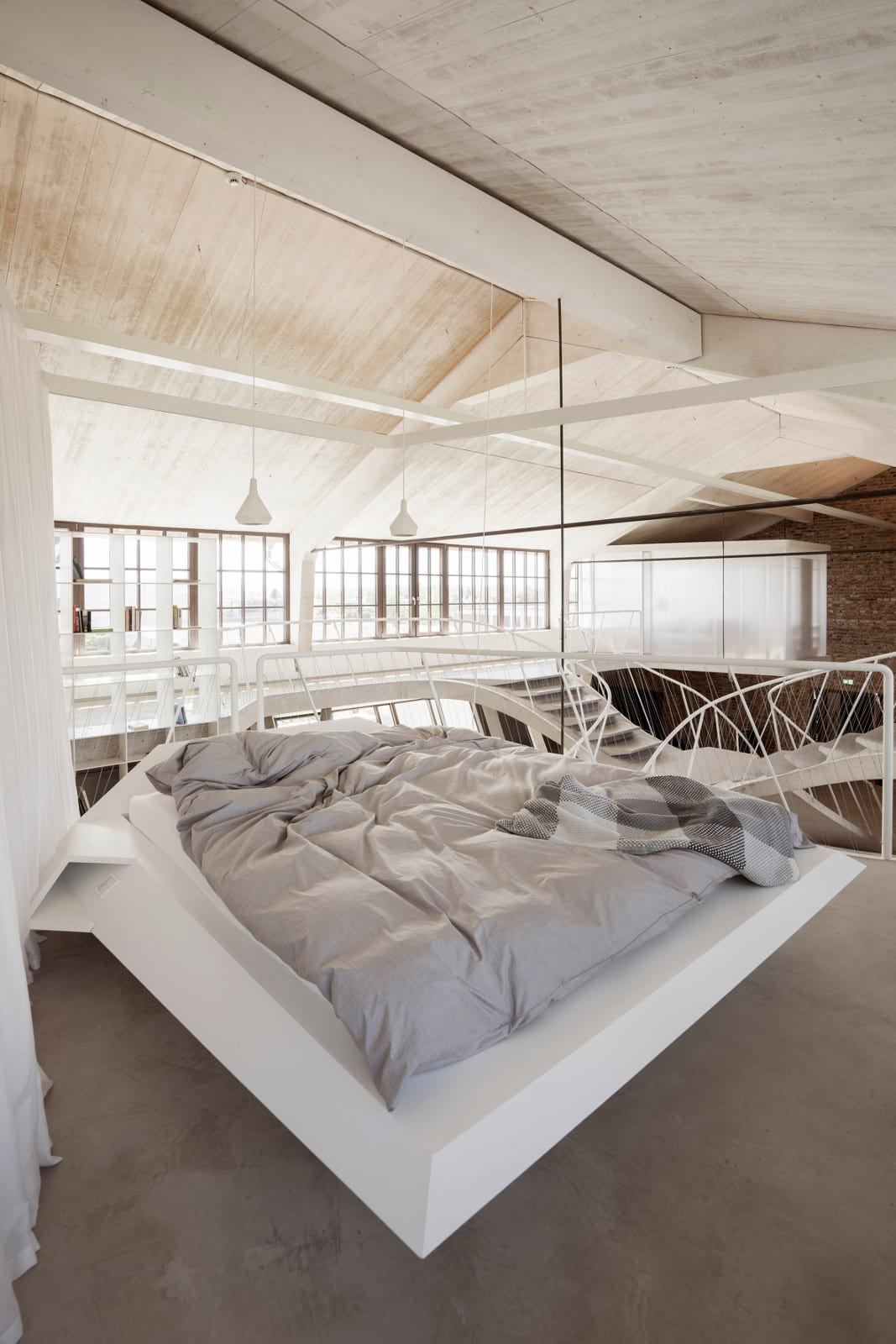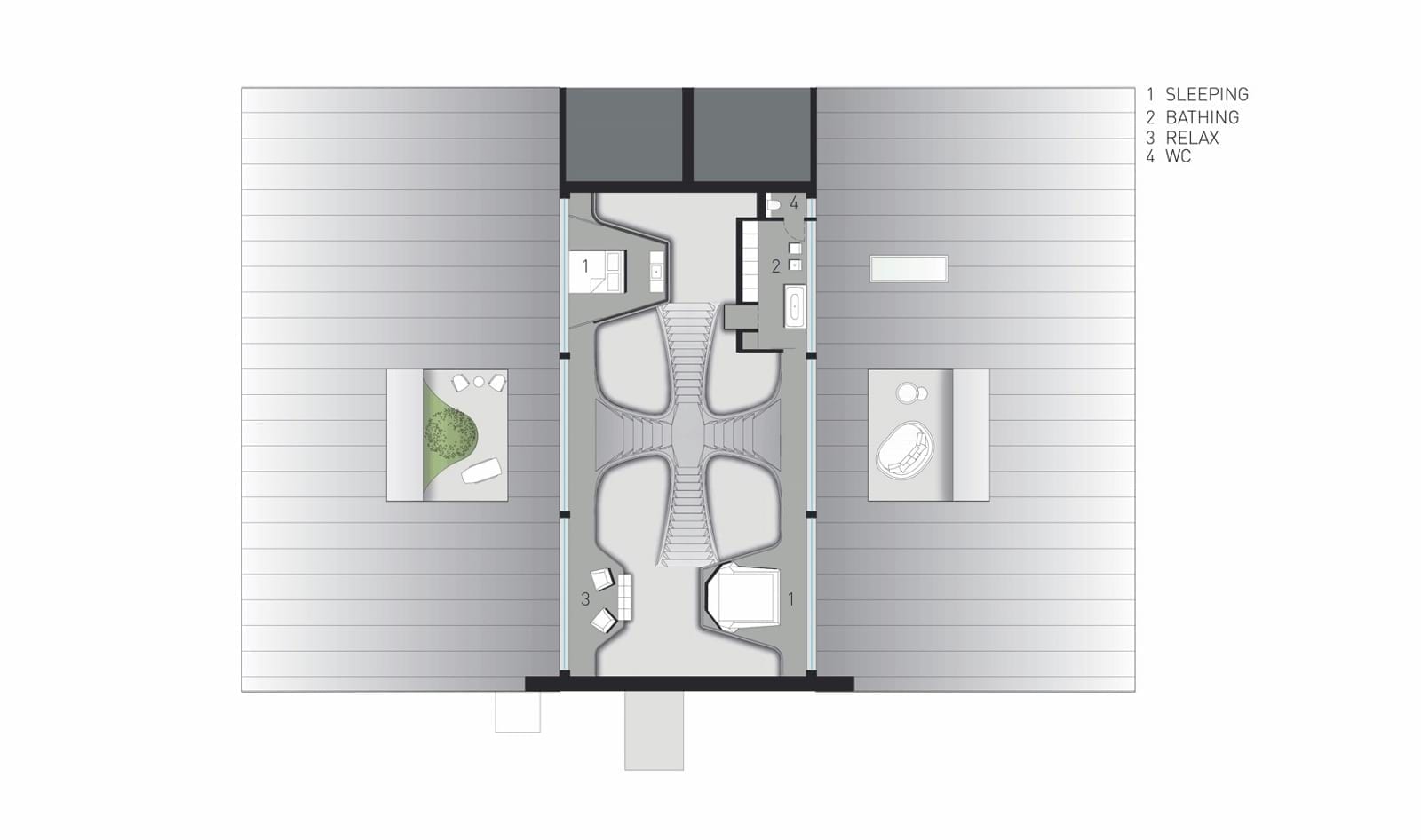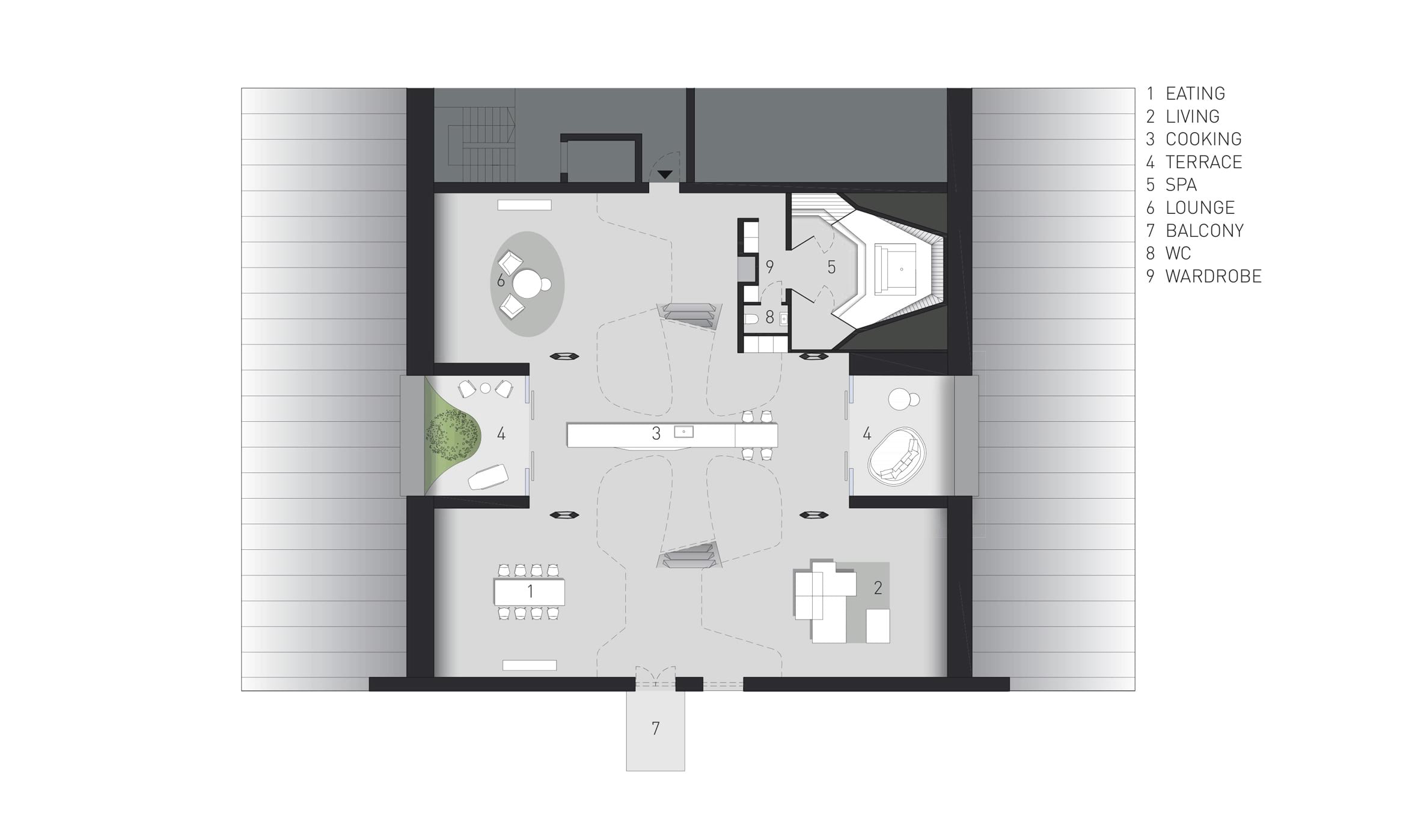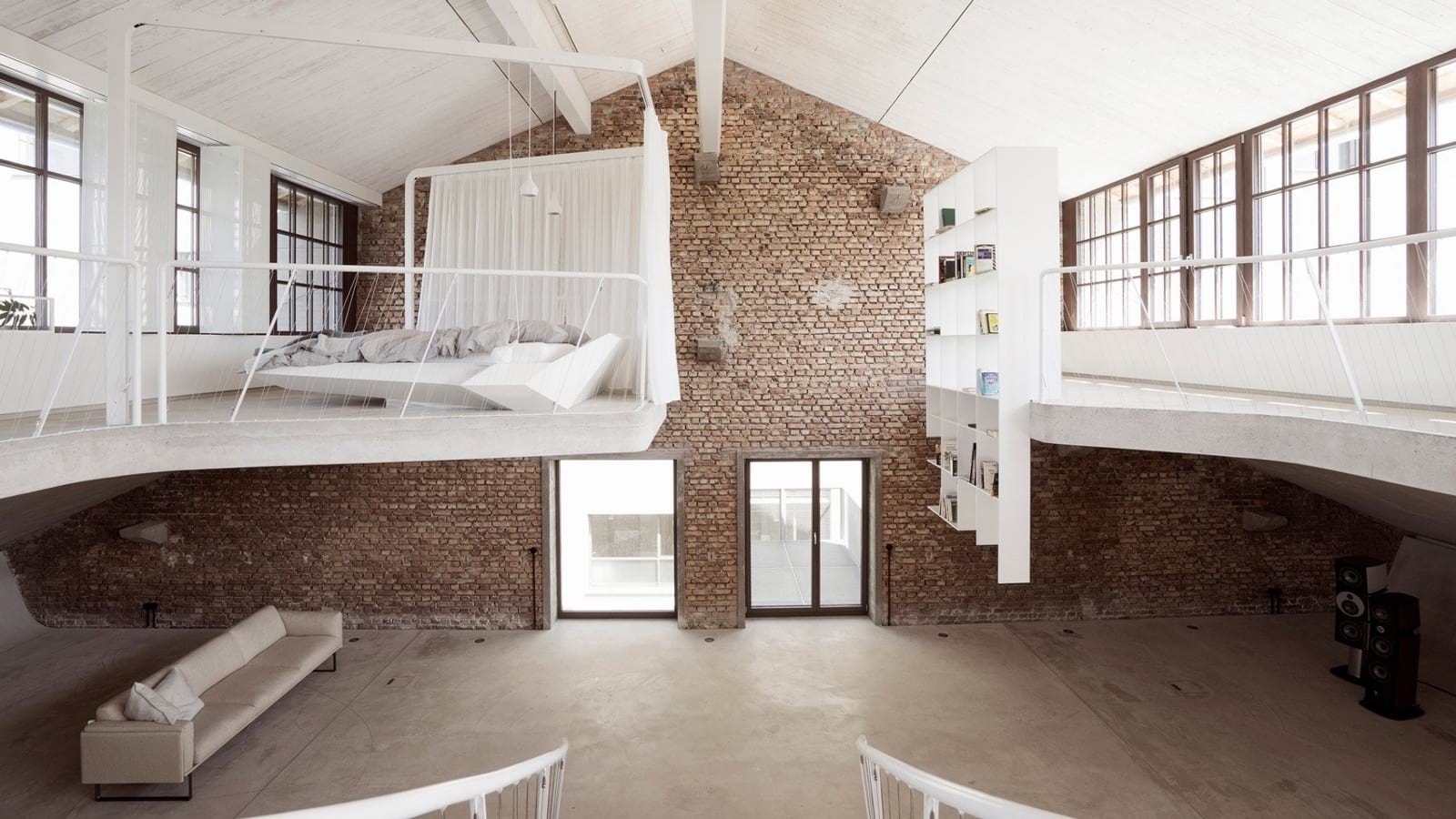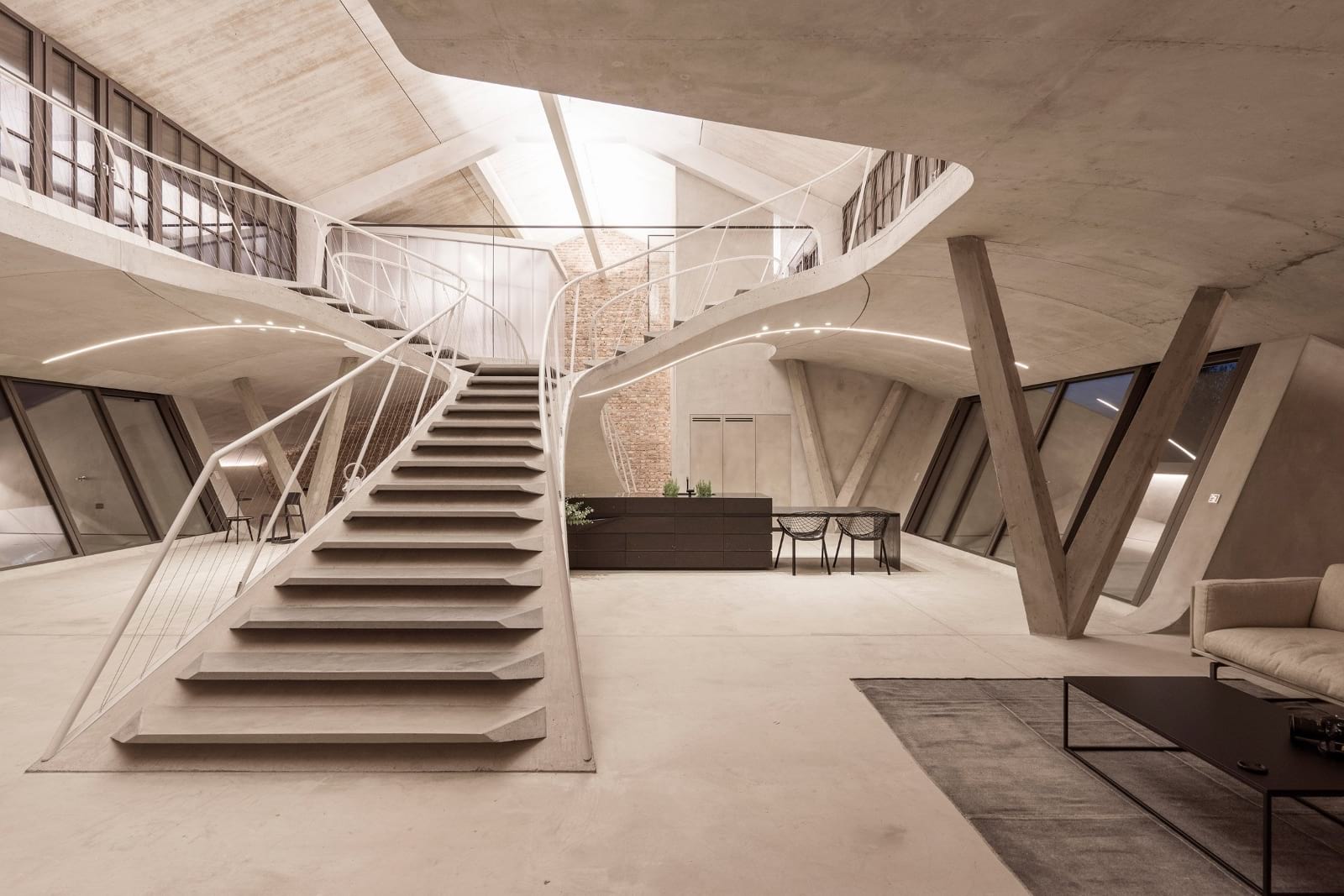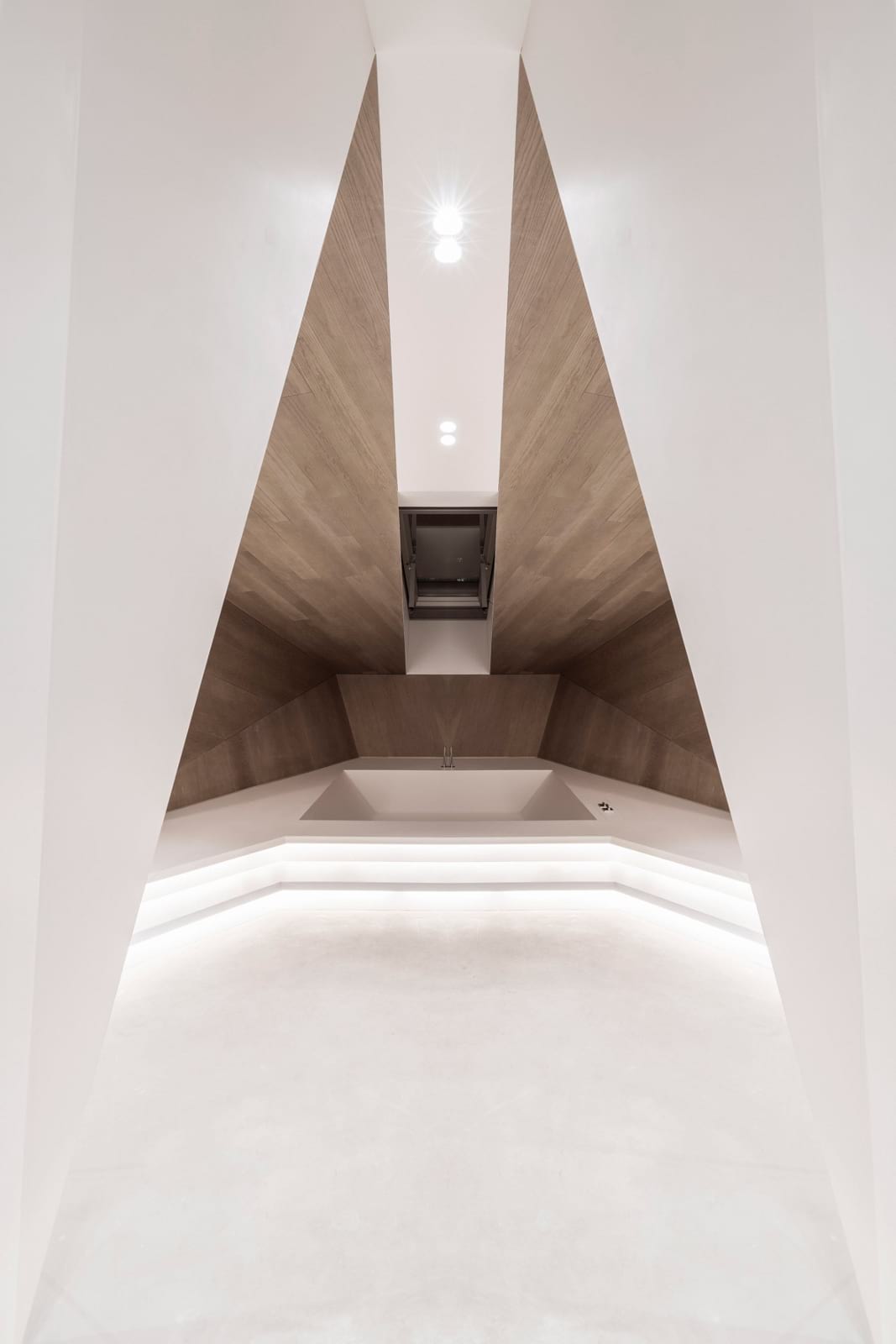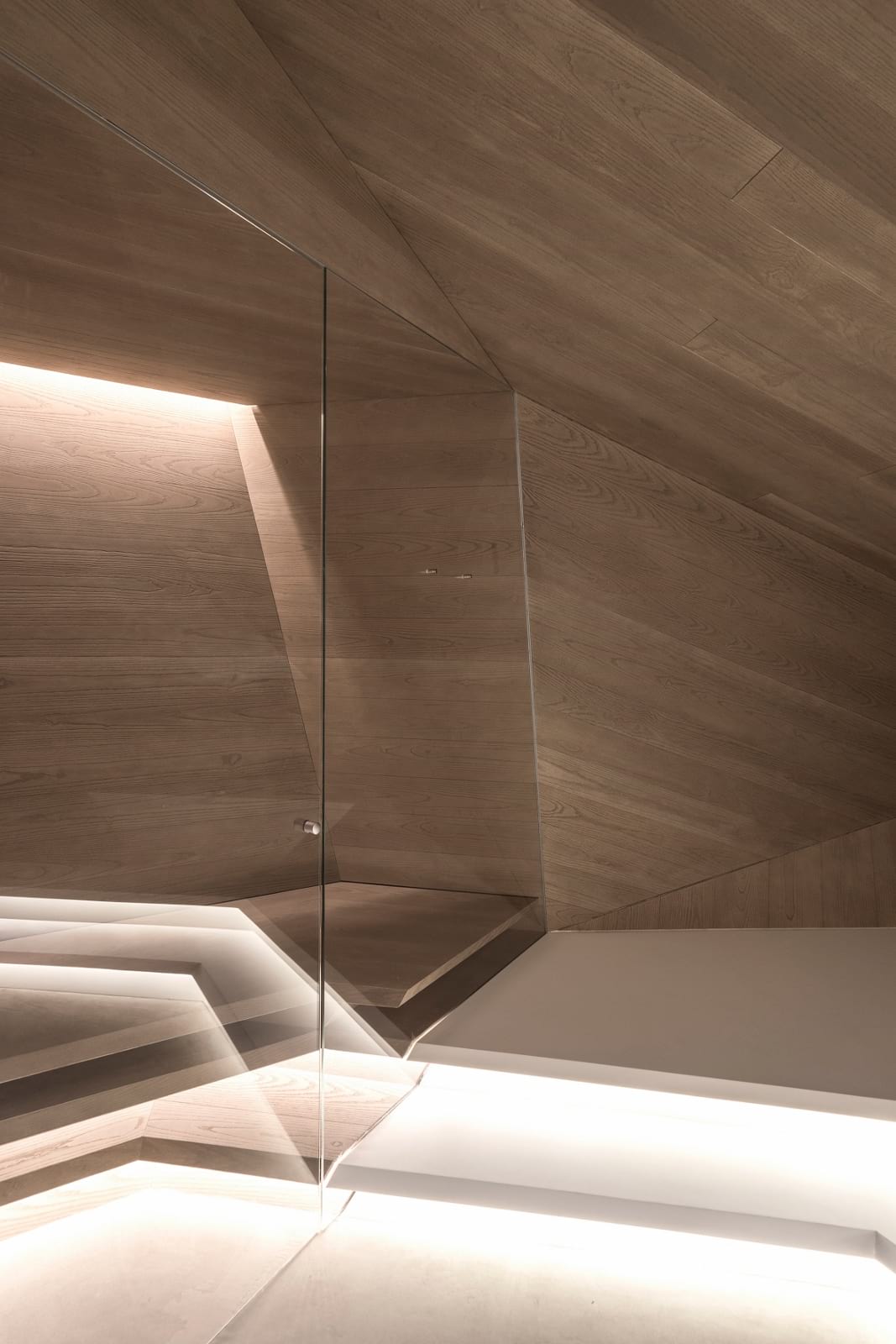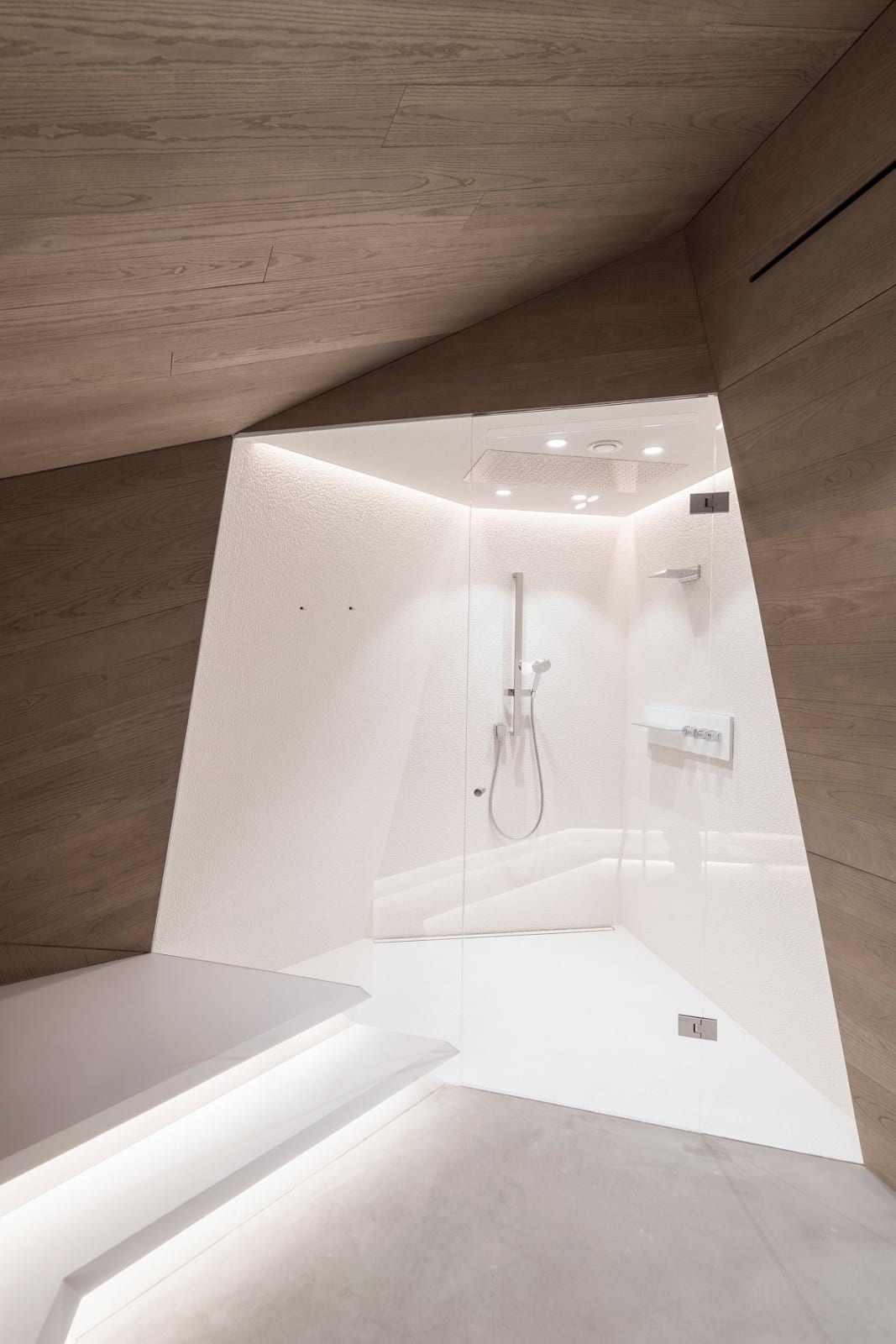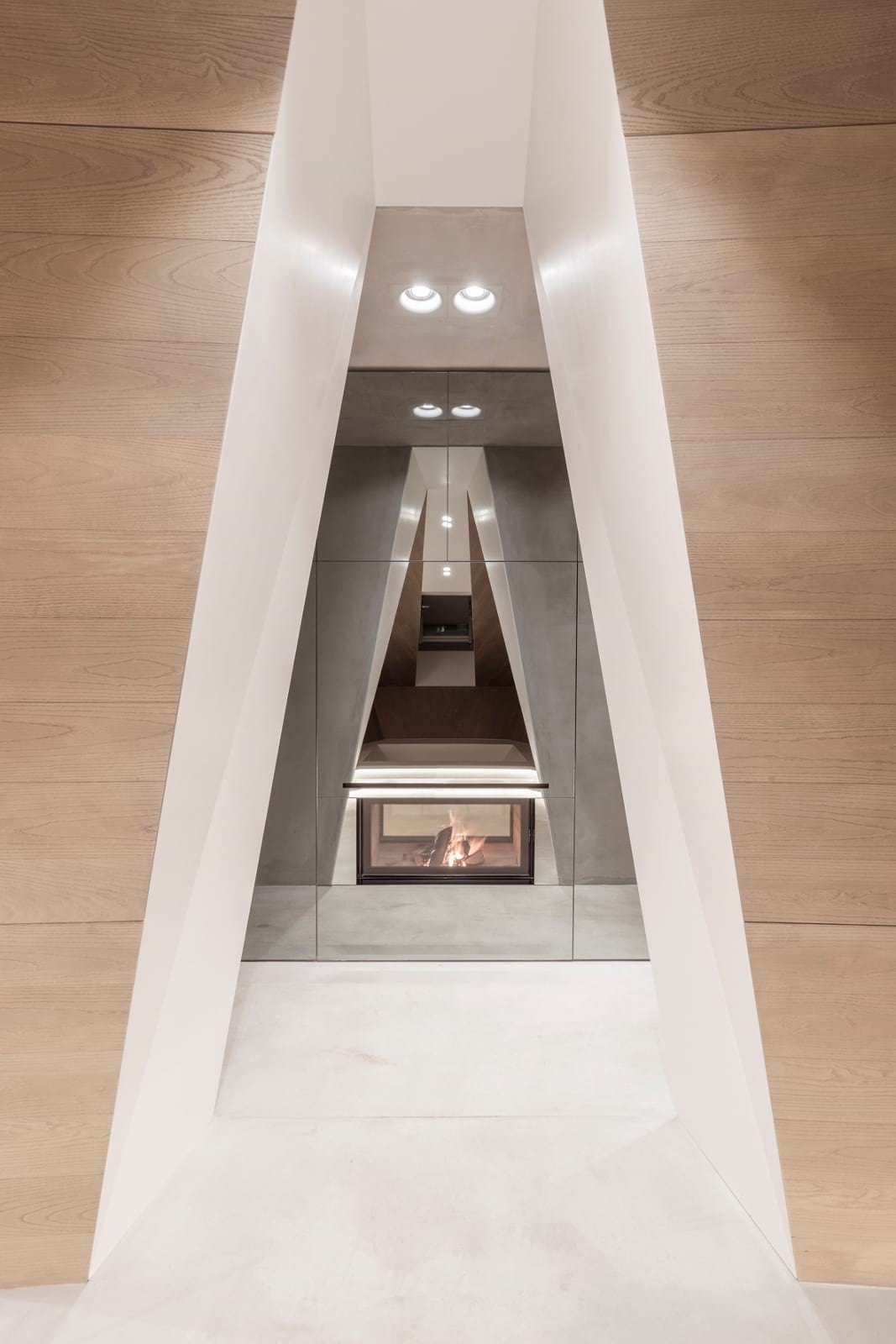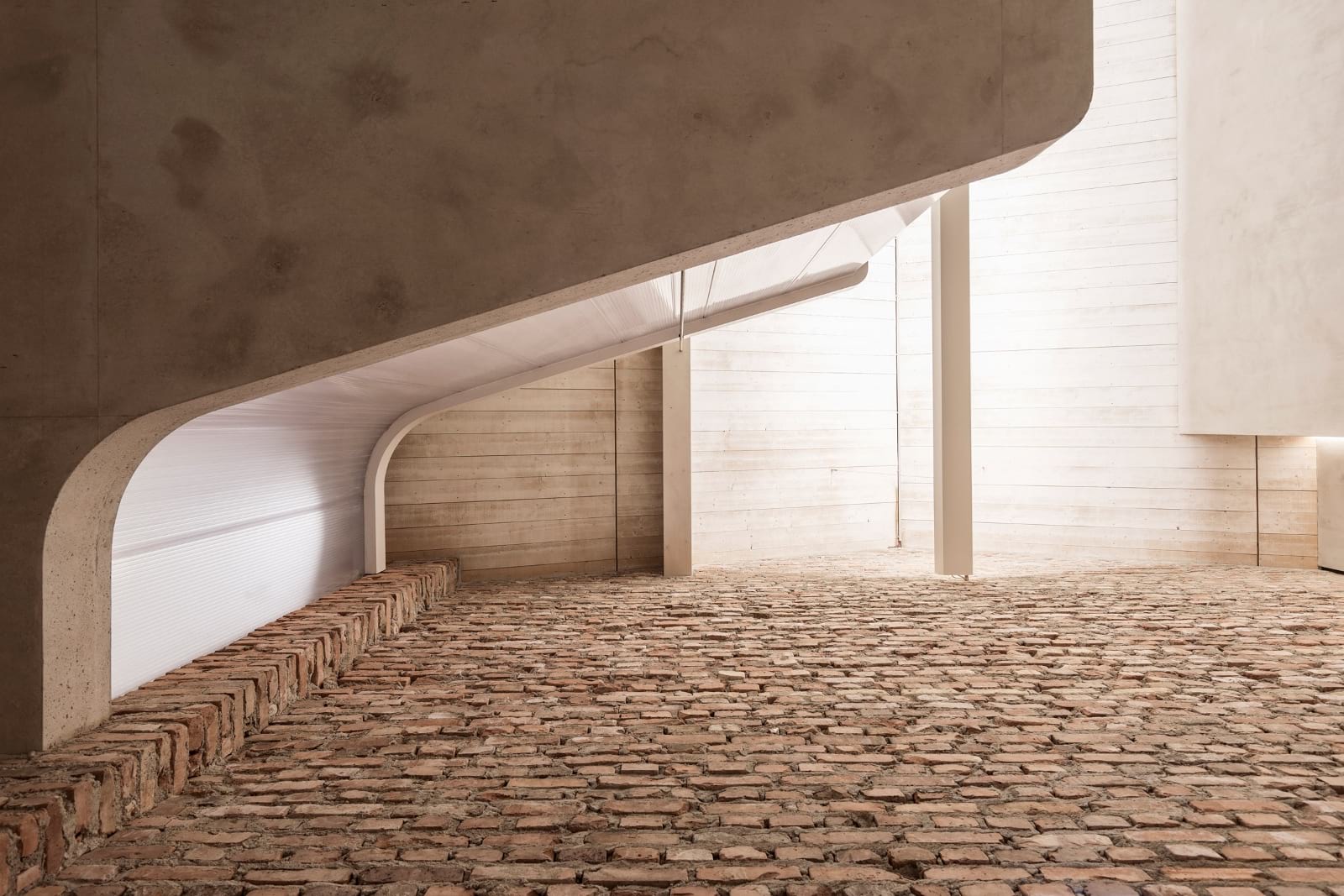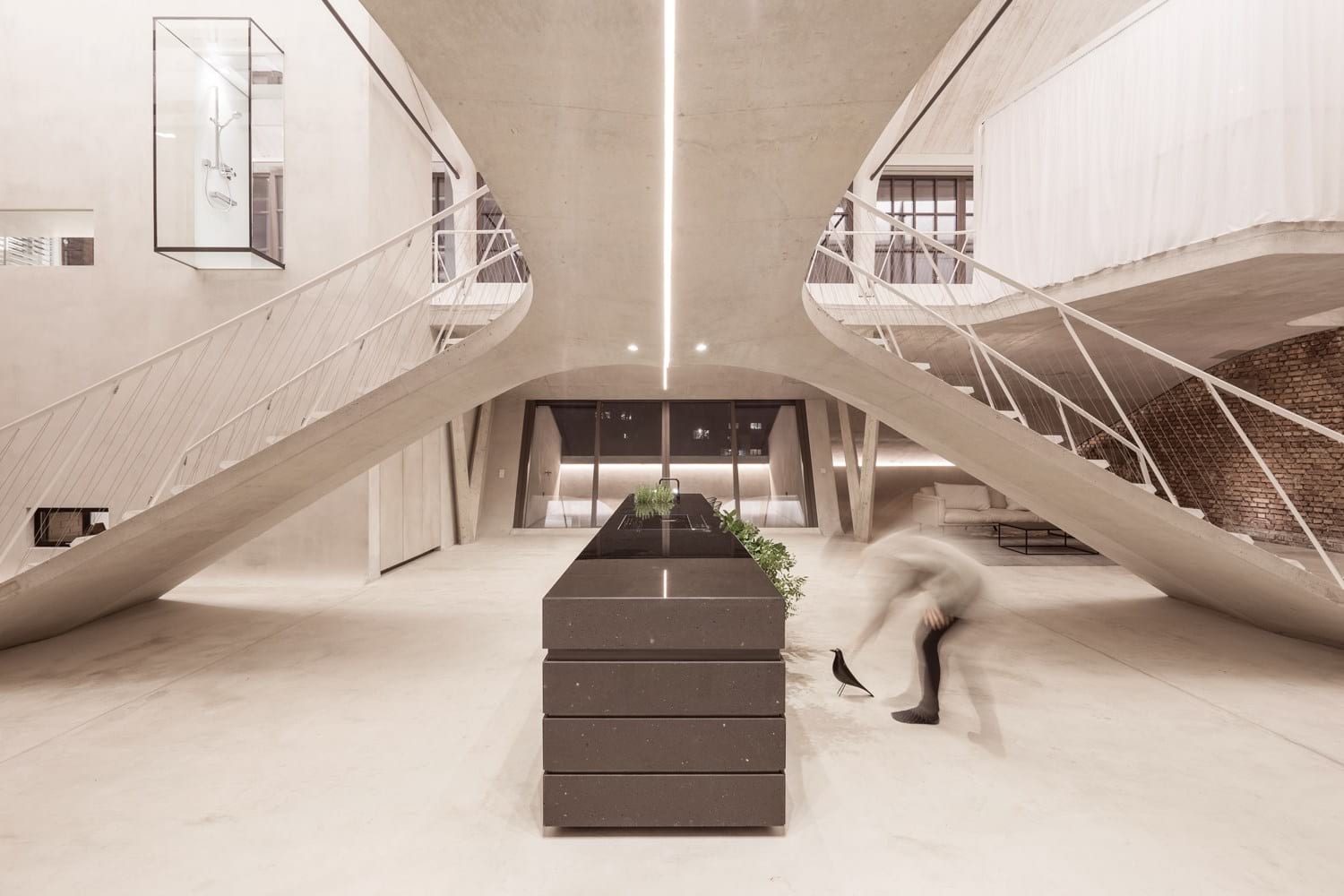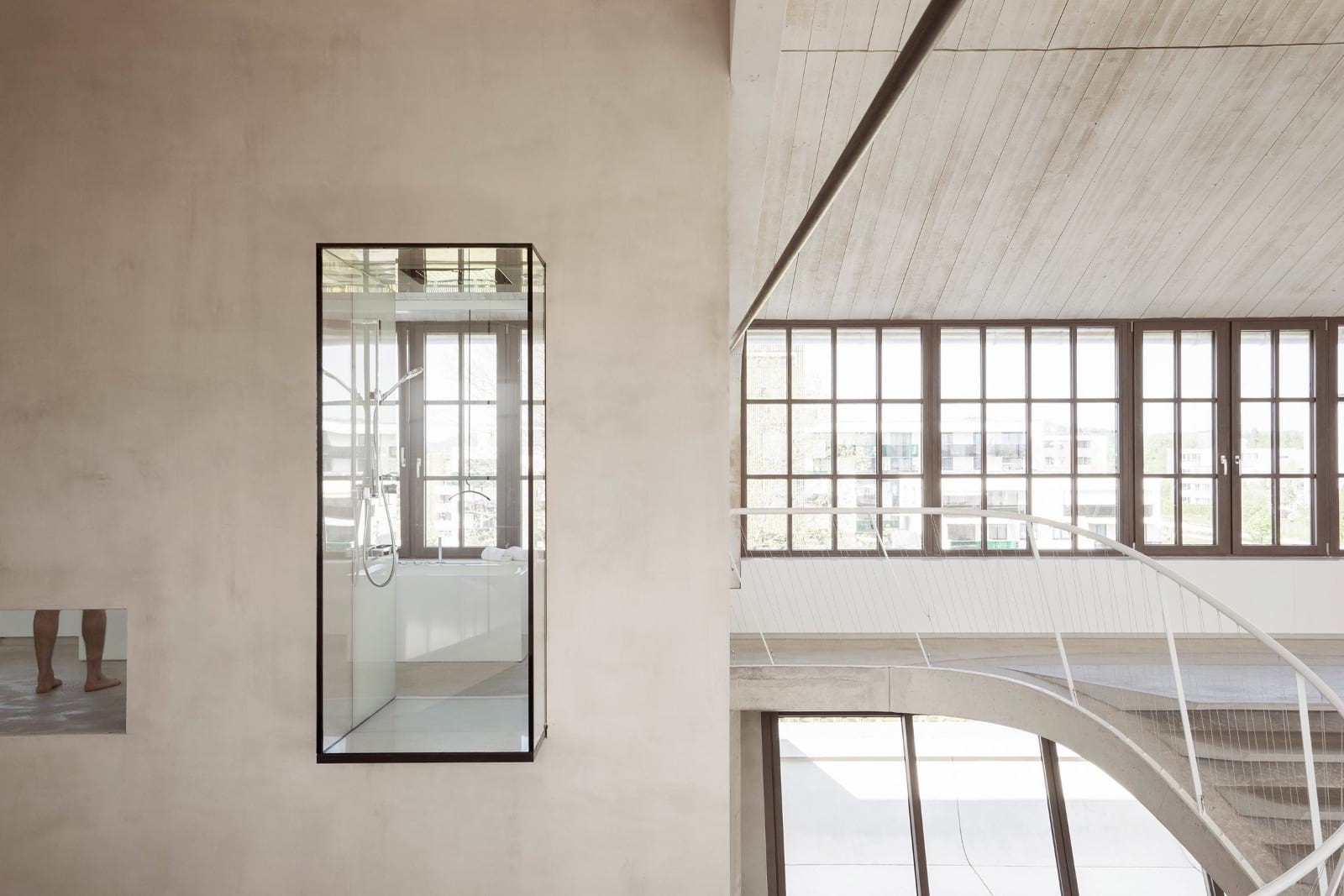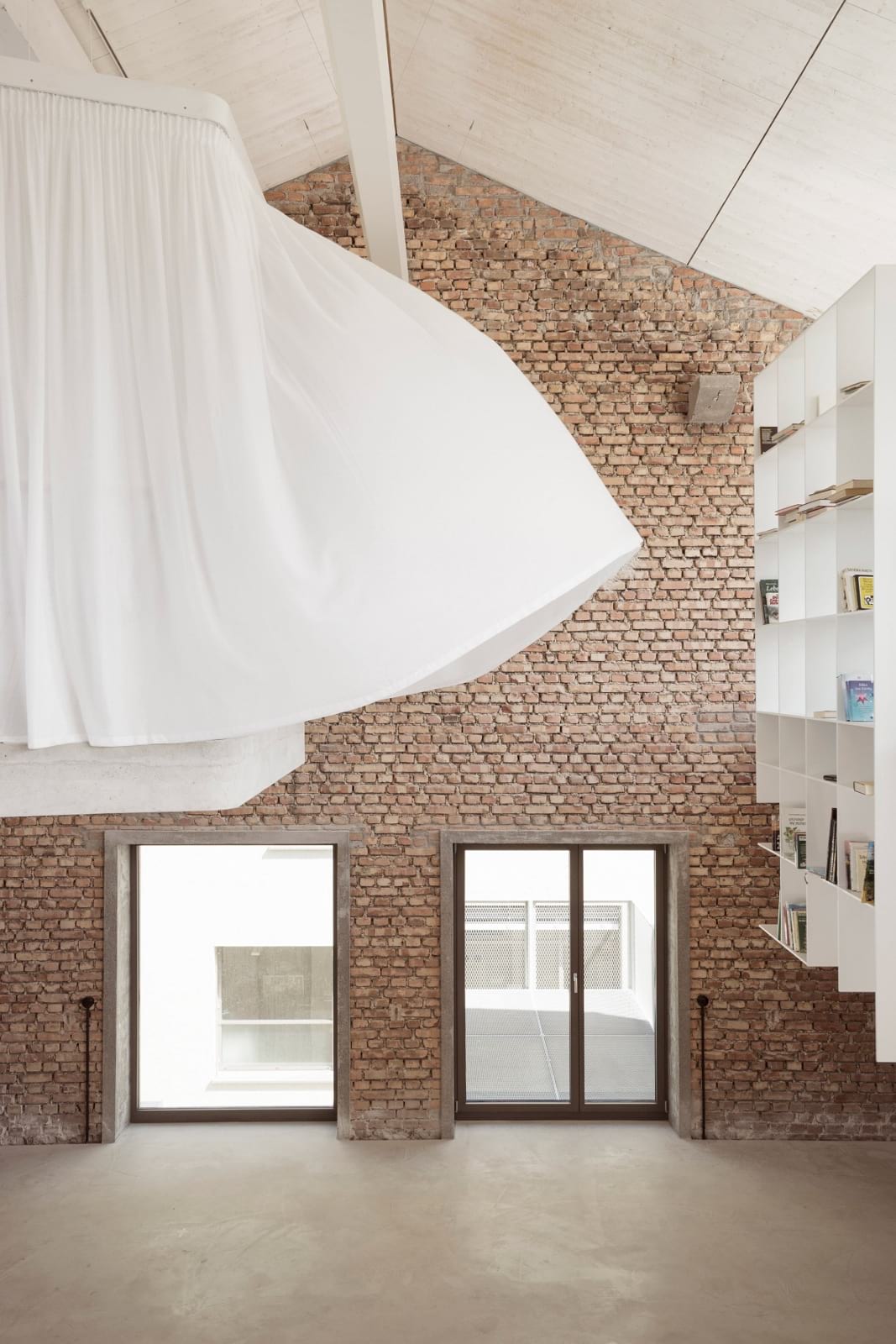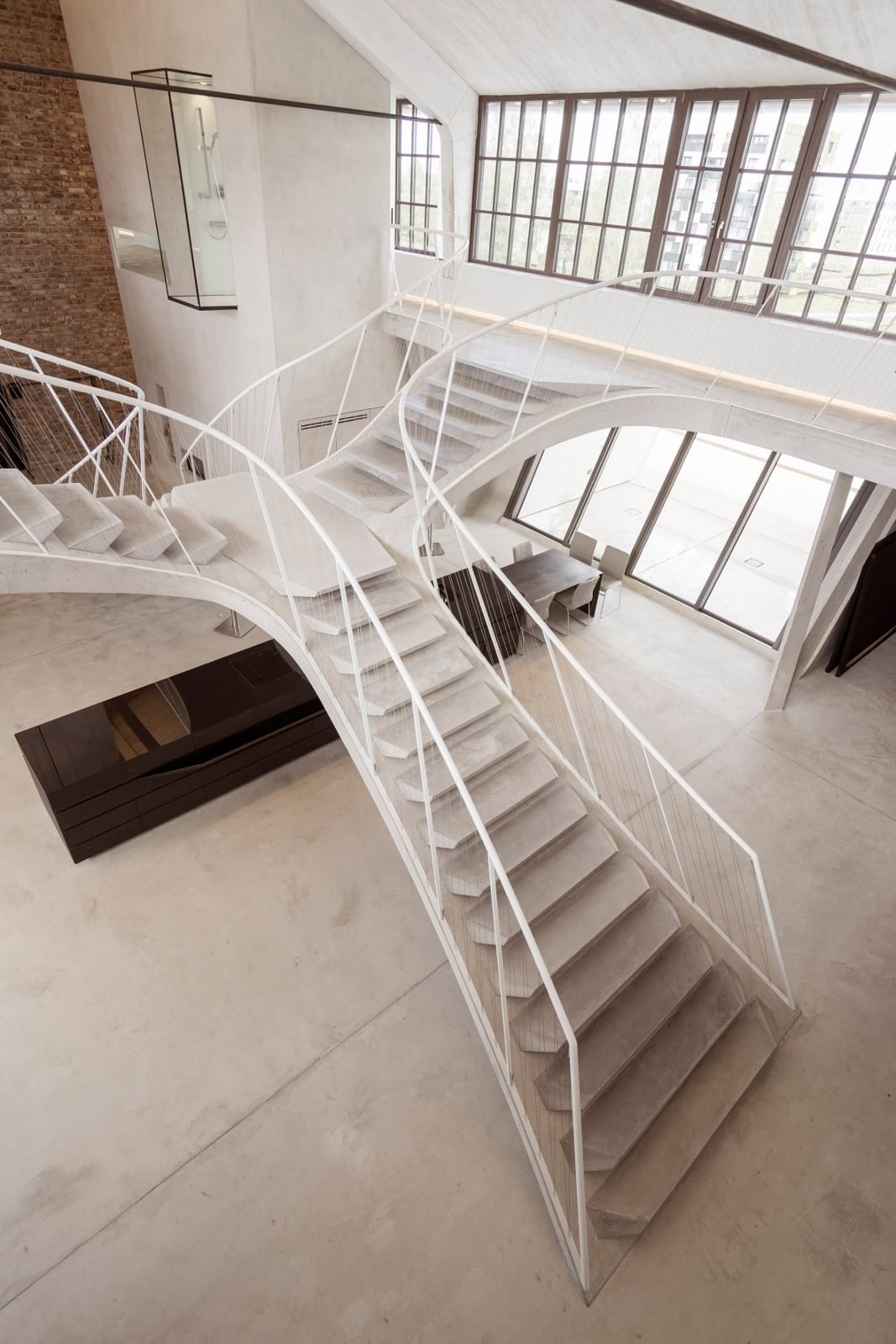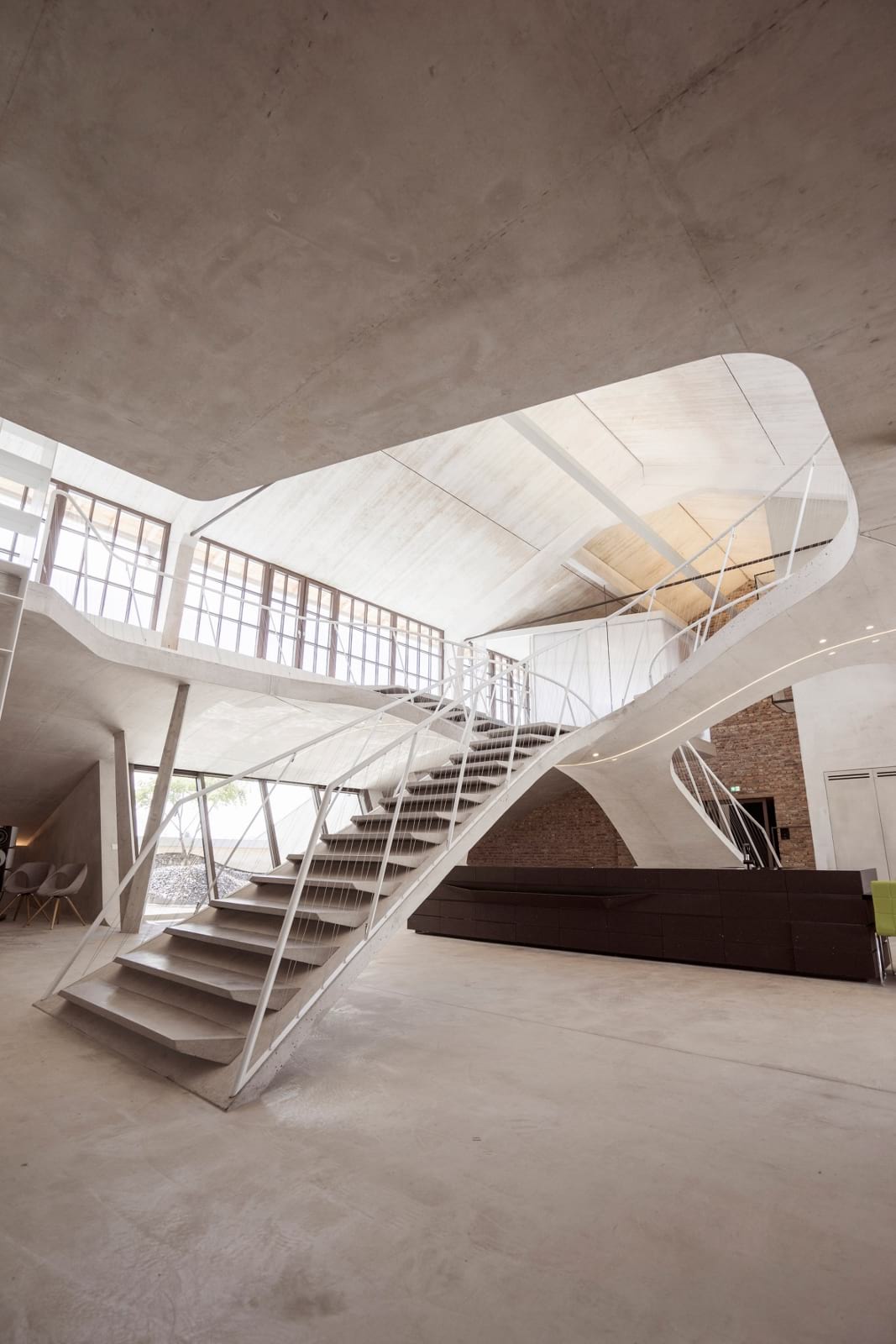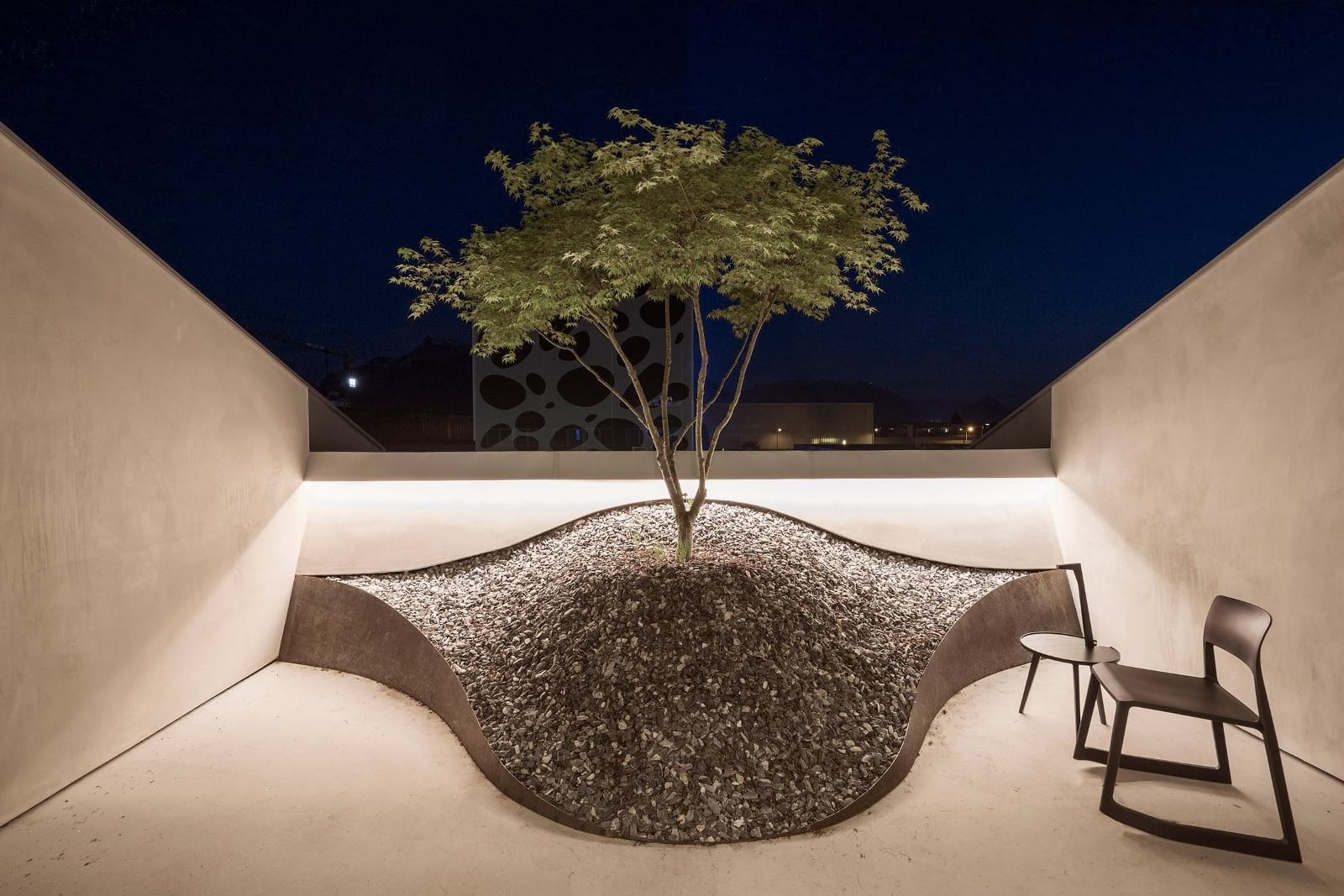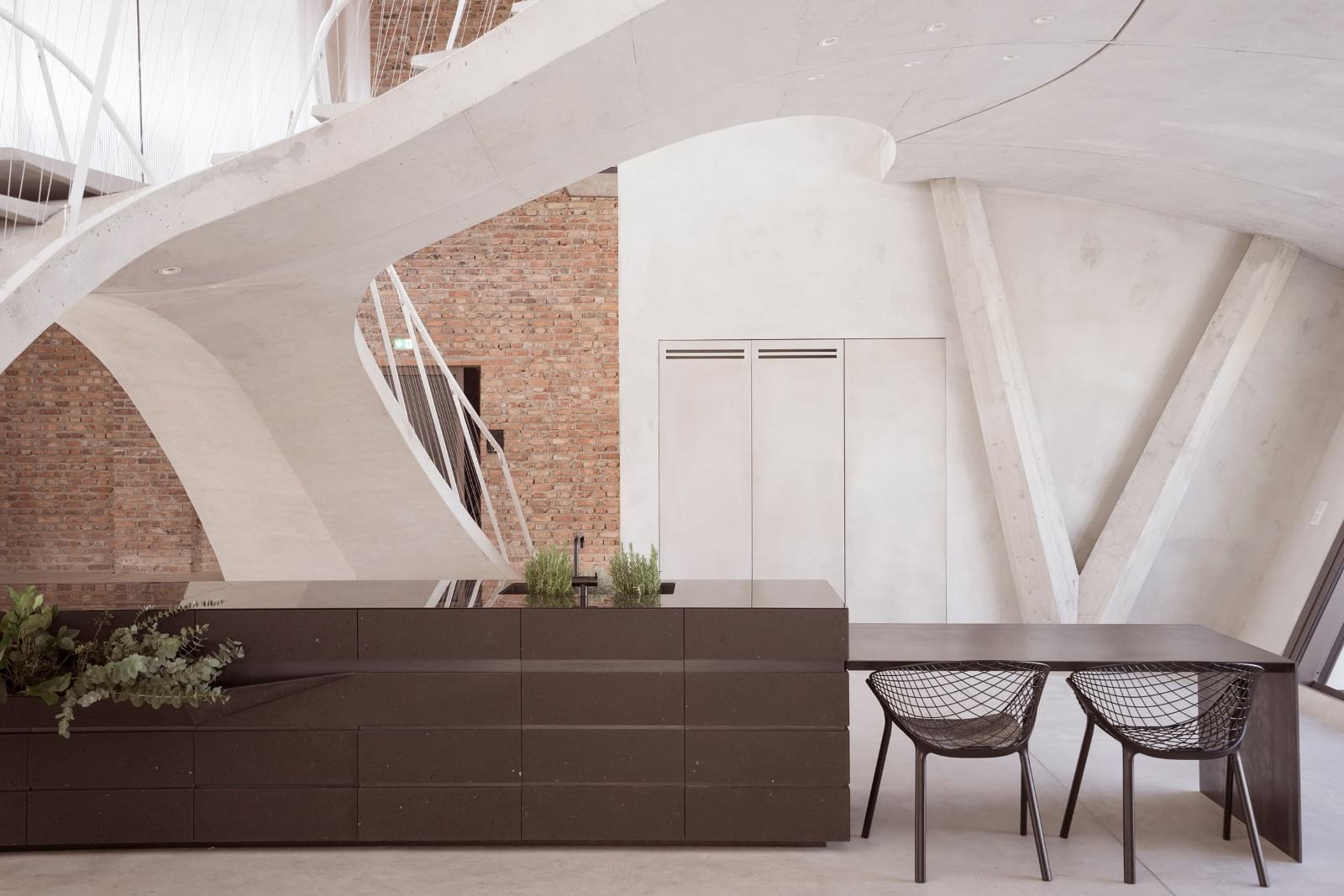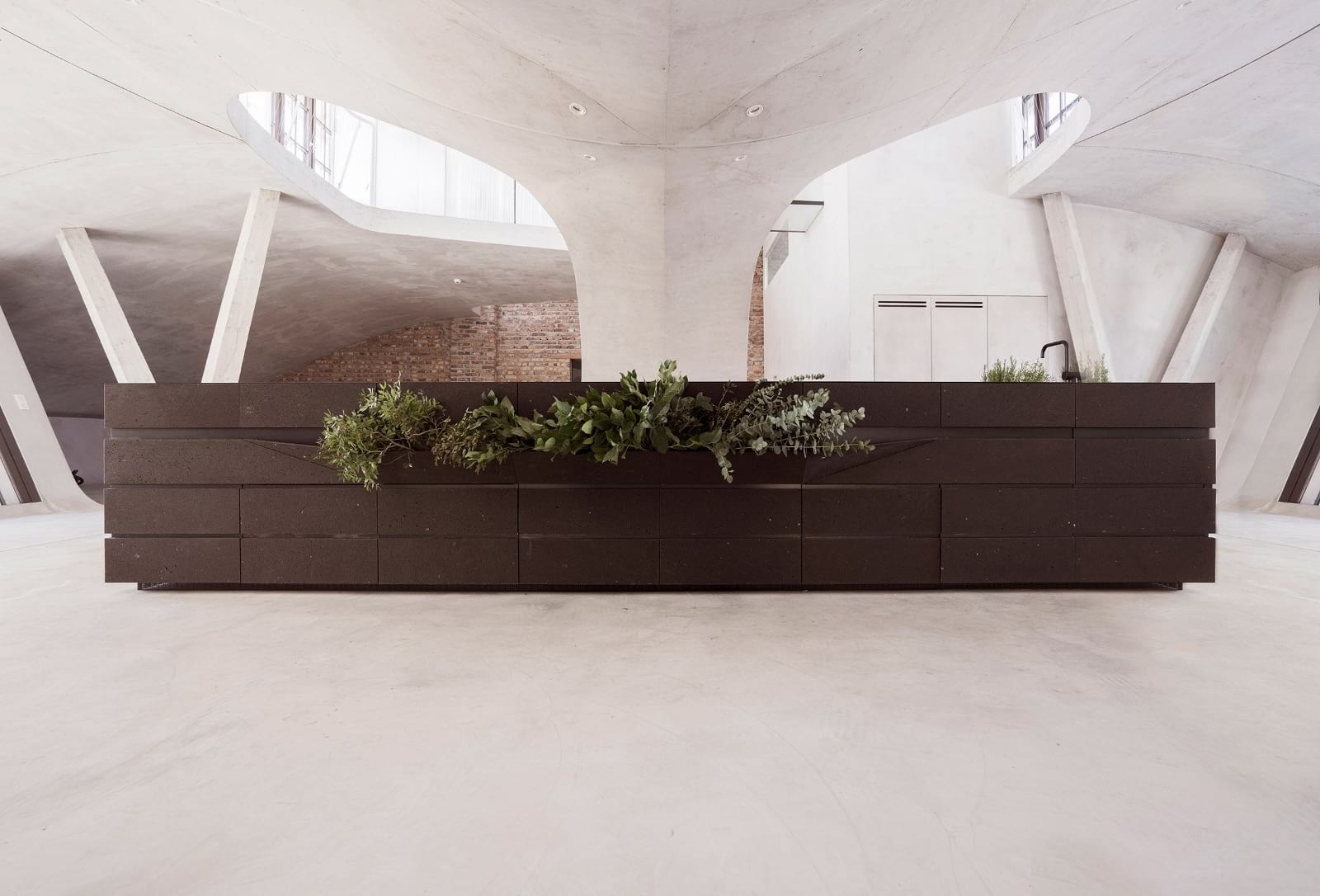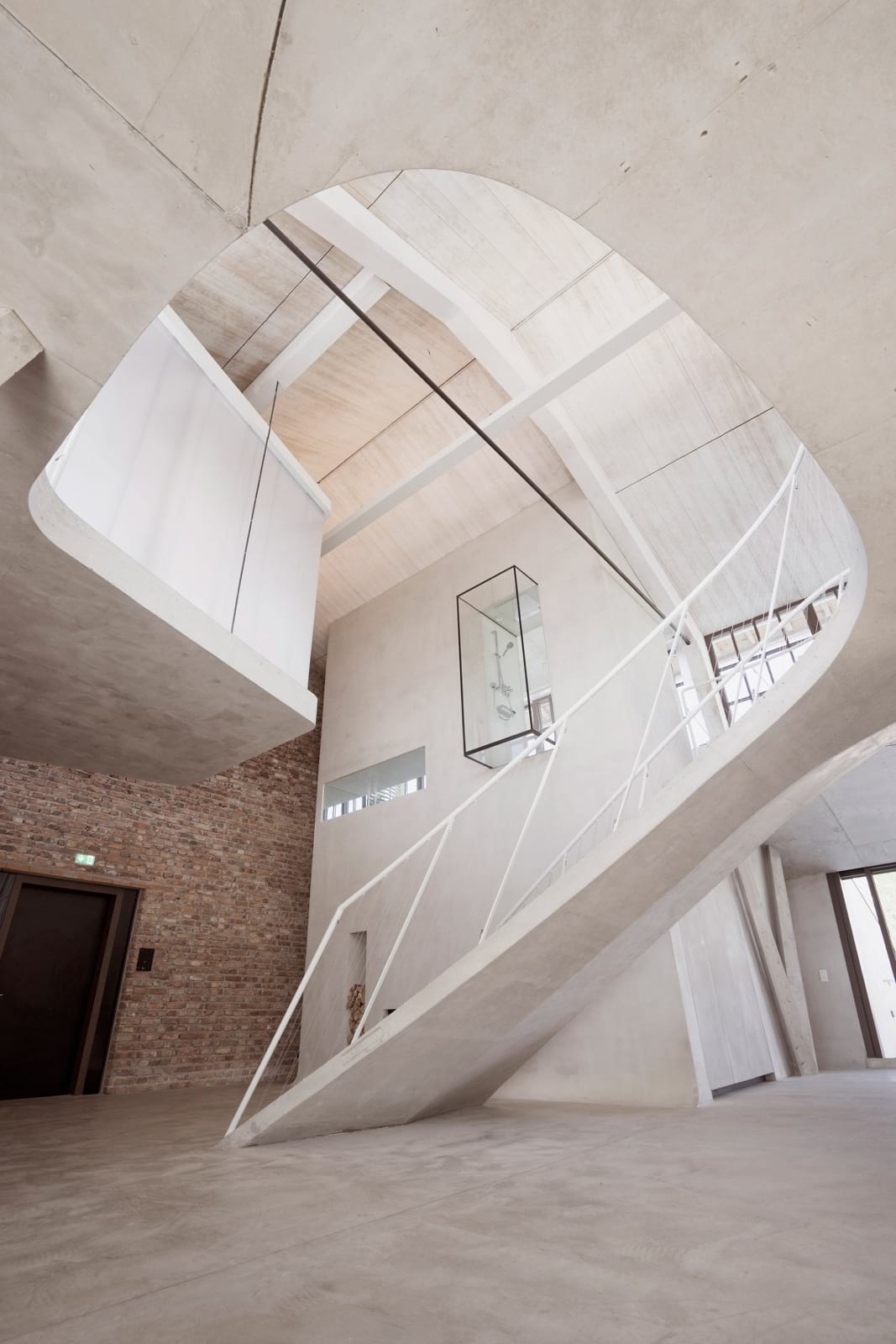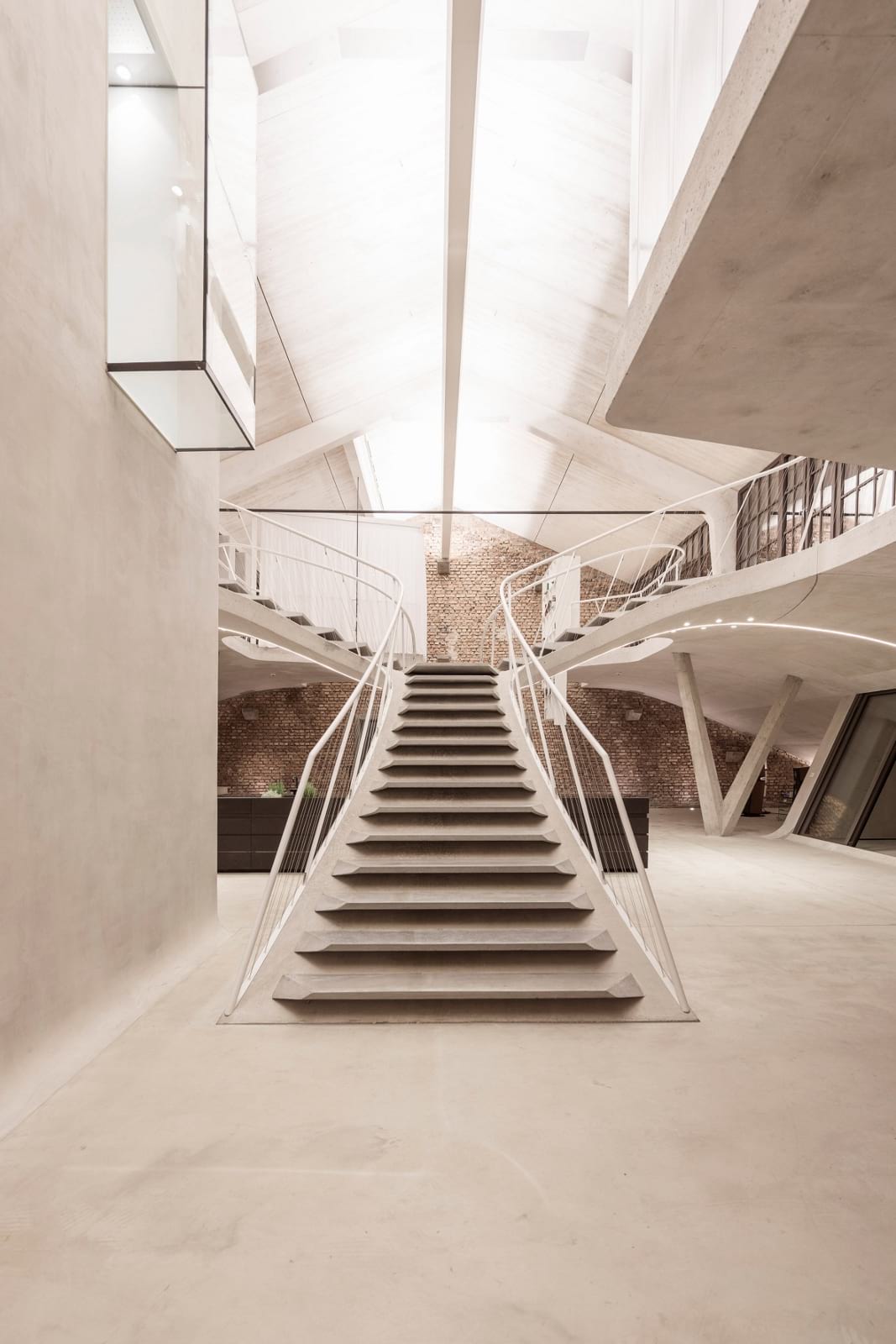Loft Panzerhalle is an exciting living space that explores spatial spaces and the idea of “architecture within the architecture”.
This unique loft apartment in a former tank station in Salzburg, Austria, features among other exclusive aspects, a sweeping concrete staircase and a glass shower cubicle that cantilevers over the living space.
In 2013 Smartvoll Architekten came out as winners at the internationally advertised contest for the loft in Panzerhalle. Their design captivates through specific, spatial dramaturgy. It is a unique fusion of traditional industrial spaces and modern materials, blended in perfect harmony. On 350 square meters and two storeys, the classic idea of a “loft” is noticeable, yet is being reinterpreted in many regards.
“I never play with the façade, I do not live there“ famously said Adolf Loos. As Loos was concerned with definitions of space, smartvoll does the same, more than 100 years later.
A special focus lies on the exhaustion of materials and of what is technologically possible. Architecture unfolds on the inside. The room- and material-concept develops the encountered and retains the established. Smoothed and waxed concrete is one of the decisive materials for shaping the interior, yet it coexists together with the classic brick structure of the original building in perfect accord.
“We wanted to revitalize the space’s original charm. Magnanimity and a spatial experience of both storeys were priorities, in all dimensions” smartvoll says.
The original industrial space is not only being preserved, but it is being enriched by completely new qualities. In order to ensure consistent brightness everywhere, smartvoll decided to forgo typical galleries and to basically leave the upper ribbon window free. Bedroom, bathroom and guestroom are distributed throughout the space, as separate bodies.
The epicenter of the room is the kitchen, a seven meter long block. The whole composition is rounded off by a concrete sculpture, or stair sculpture, which not only opens up all rooms, but also appears to be carrying them.
“Through the stair sculpture, which spans across the rooms, you do not see the way between the levels as a vertical, functional connection, but rather as an electric spatial experience.”
Incidentally, the sculptural staircase divides the room, creates a roof over the kitchen, recesses and elevations and therefore allows you to stay in motion – and to see everything from everywhere. The same applies to the glass shower, which protrudes from the fully glazed bathing block at a height of five meters. James-Bond décor like this can be found all over. The absolute highlight, albeit being a bit hidden, is the wellness area. Fireplace included.
The stairs are an architecture within the architecture. Concreted in-house, the engineering is being exhausted in all respects. A tender object with minimal dimensions, but tremendous spatial impact. Something that does not allow for competition: Besides the concrete, only subtle, semi-transparent materials are being used, such as Profilit, to separate the guest area, curtains for the bedroom or integrated furniture, like a hanging steel shelf. Every other piece of furniture seems to be integrated into the construction. An unalterable picture, which celebrates only free space.
“Connections of space and view are being held intact marvelously and the room is not being cut into different bodies, but can be experienced perfectly with its impressive height of eight meters.”
At the lower level, the room is connected to two balconies. However, even this façade aligns itself with the carriers of the concrete sculpture in the slant; the balconies look like additional alcoves of the overall concept. They feature a contemplative zen-garden, including a grassy knoll, a tree jasmine and a classic relax-terrace.
In the end it is a beautiful scenery that is film-worthwhile, it could be the heroes’ home or the villains’ lair. But this is the beauty of it, a perfect urban scenery that is elegant, regardless of the way one interprets it.


